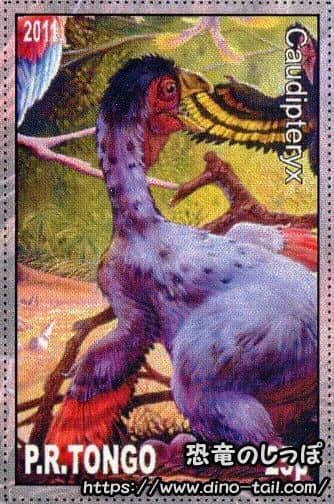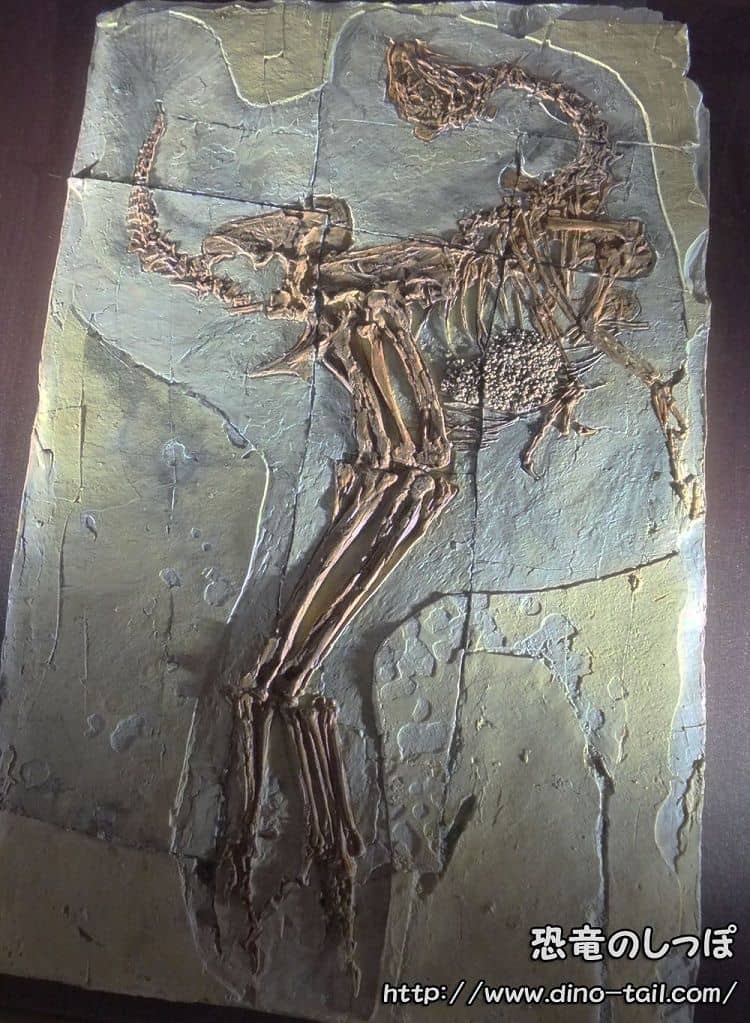About Caudipteryx
| Scientific Name (Genus) | Caudipteryx |
| Meaning of Name |
Tail feather
cauda (tail) [Latin] - pteryx (feather) [Greek] |
| Classification | Saurischia, Theropoda (Coelurosauria) |
| Total Length | Approx. 1m |
| Diet | Omnivorous |
| Period | Early Cretaceous (approx. 144-99 million years ago) |
| Species |
Caudipteryx zoui
Caudipteryx dongi |
| Year of Paper Publication | 1998 |
| Genus Name Publication | Ji, Q.; Currie, P.J.; Norell, M.A.; Ji, S. (1998). Two feathered dinosaurs from northeastern China. Nature, 393. |
Characteristics
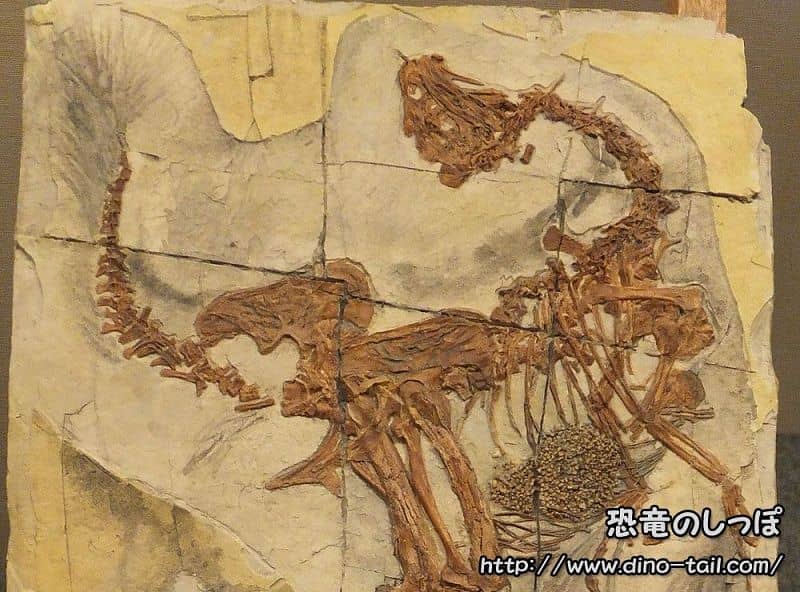
Note the feather impressions on the tail.
Caudipteryx is a feathered dinosaur discovered in China in 1998. It lived during the Early Cretaceous (about 144-99 million years ago). Caudipteryx had fan-shaped feathers growing at the tip of its tail.
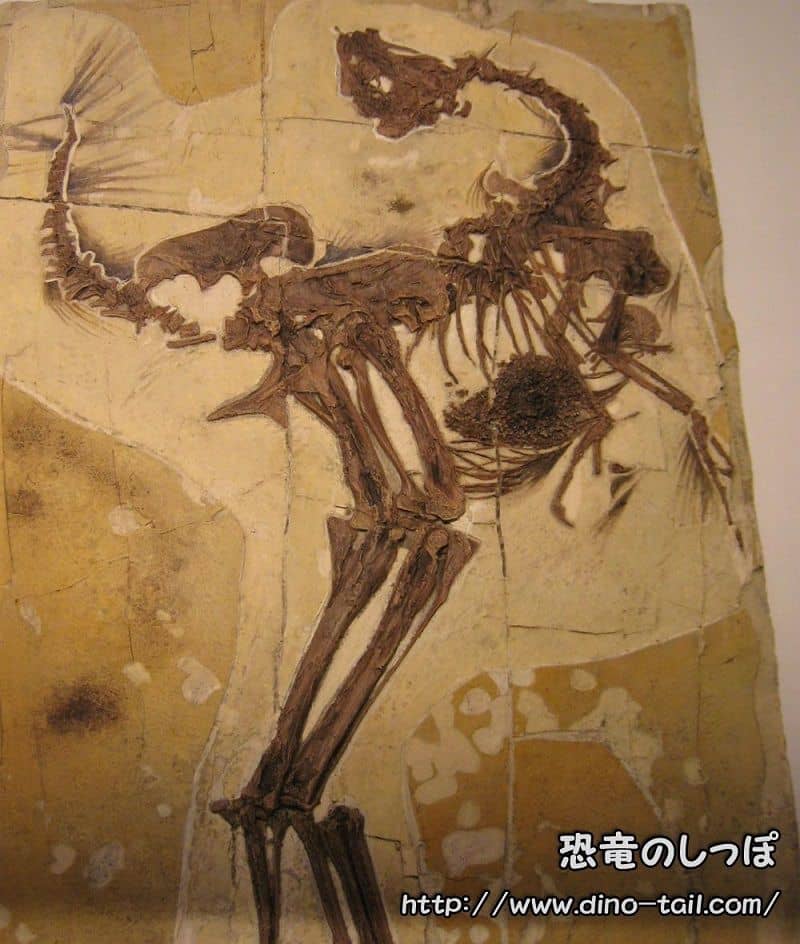
The feathers of Caudipteryx were not for flying.
Although it had developed feathers on its forelimbs, it seems it could not fly. Unlike the flight feathers of modern birds, its feathers were symmetrical along the shaft. These impressive feathers may have been used for individual recognition, insulation, or courtship displays, much like the feathers of a modern peacock.
Its mouth was a beak, and it had small teeth in its upper jaw.
Numerous small stones have been found in its stomach area, which are believed to be gastroliths that aided in digesting food. It is thought to have been an omnivore.
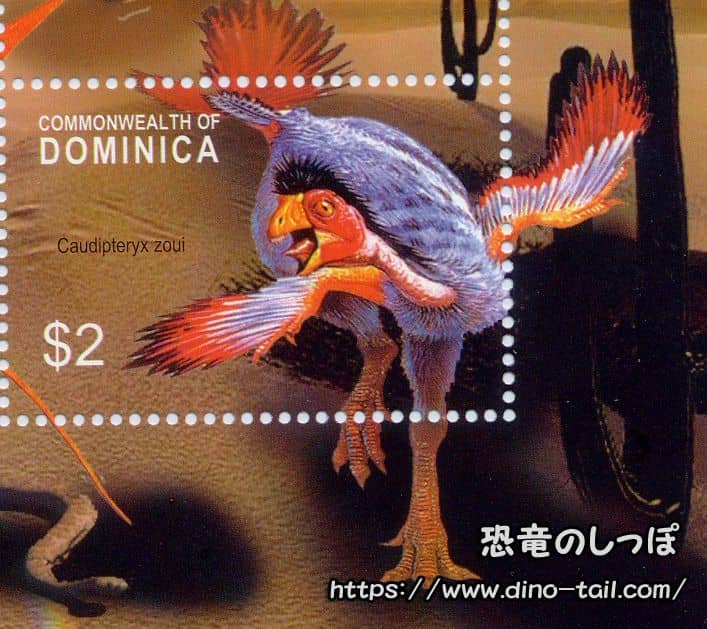
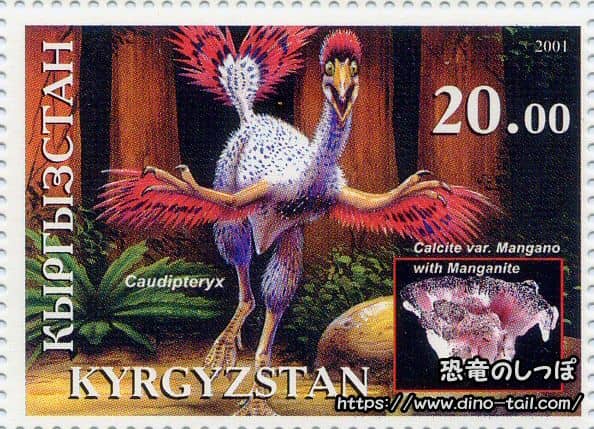
Dinosaur or Bird? The Great Debate
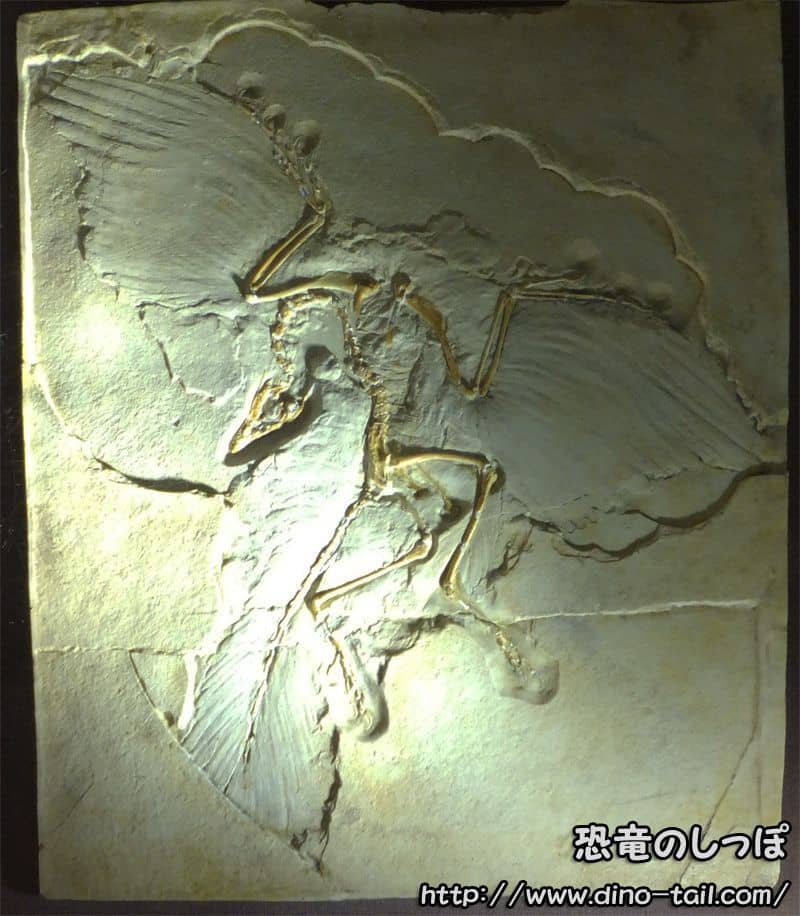
Comparisons with Caudipteryx sparked debate.
When the Caudipteryx fossil was first discovered, its advanced feathers and bird-like skeleton led some paleontologists to believe it was not a dinosaur, but a type of primitive, flightless bird. If true, this would have suggested that the ancestors of birds might have evolved from a different lineage than theropod dinosaurs.
However, subsequent detailed studies revealed that the basic skeletal features of Caudipteryx (such as tooth shape, arm length, and pelvic structure) were clearly those of a theropod dinosaur, closely related to Oviraptor. The current consensus is that Caudipteryx was a feathered theropod dinosaur on a separate branch from the one that evolved into birds.
This debate highlights how Caudipteryx blurs the line between 'dinosaur' and 'bird.' The existence of dinosaurs with feathers used for various purposes other than flight teaches us that the evolutionary path to birds was not a straight line.
Feather Color Revealed! Fossils Tell the Tale of Its Appearance
Recent advances in research technology have made it possible to estimate the color of dinosaur feathers by analyzing traces of pigment cells called 'melanosomes' preserved in fossils. A 2019 study of Caudipteryx feather fossils revealed its coloration.
Analysis of melanosomes from the tail feathers of Caudipteryx suggests they were dark in color, possibly with an iridescent sheen (structural color).
Discovery and Publication
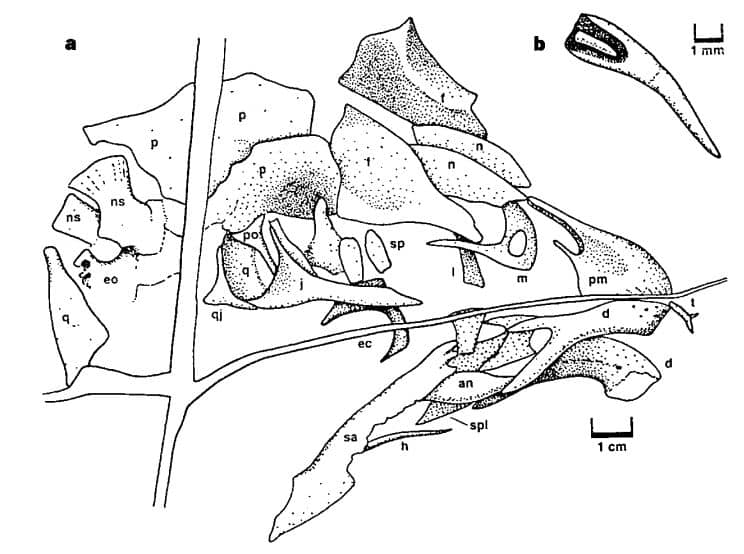
Source: Ji, Q.; Currie, P.J.; Norell, M.A.; Ji, S. (1998). Two feathered dinosaurs from northeastern China. Nature, 393.
It was discovered in 1997 in the Yixian Formation in Liaoning Province, northeastern China. The following year, it was described in a paper as the type species "Caudipteryx zoui" by Ji Qiang of the National Geological Museum of China, Philip J. Currie of the Royal Tyrrell Museum of Palaeontology in Canada, and others. A total of eight specimens have been excavated since then, all from the same formation.
The tyrannosauroid Dilong has also been found in the same formation.
Caudipteryx Stamp & Fossil Gallery
